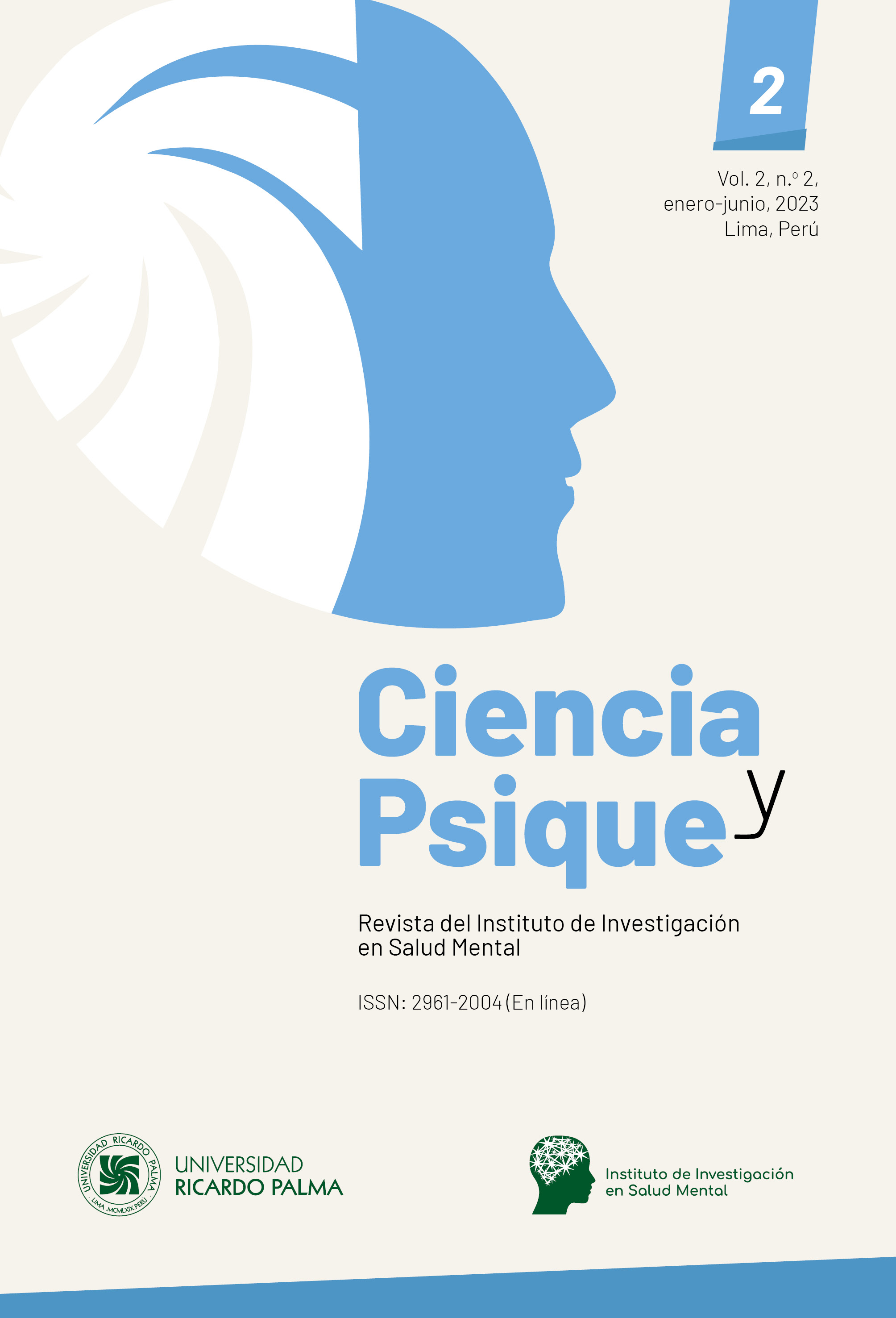La importancia de la creatividad para la salud mental
DOI:
https://doi.org/10.59885/cienciaypsique.2023.v2n2.05Palabras clave:
creatividad, capacidad, salud mentalResumen
La creatividad puede tener un impacto significativo en la salud mental de una persona al ofrecer una forma de expresión y liberación emocional, estimular la mente, alentar la resolución de problemas y brindar un sentido de logro y propósito. En este artículo se analiza la relación entre la creatividad y la salud mental, se revisa la evidencia científica que sustenta esta relación y se discuten las implicaciones para la práctica clínica y la promoción de la salud mental. Se concluye que la creatividad puede ser una herramienta valiosa para mejorar la salud mental y el bienestar en general.
Citas
Amabile, T. M. (1983). The social psychology of creativity: A componential conceptualization. Journal of Personality and Social Psychology, 45(2), 357-376. https://doi.org/10.1037/0022-3514.45.2.357
Beaty, R. E., Benedek, M., Silvia, P. J., & Schacter, D. L. (2016). Creative cognition and brain network dynamics. Trends in Cognitive Sciences, 20(2), 87-95. https://doi.org/10.1016/j.tics.2015.10.004
Bengtsson, S. L., Nagy, Z., Skare, S., Forsman, L., Forssberg, H., & Ullén, F. (2005). Extensive piano practicing has regionally specific effects on white matter development. Nature Neuroscience, 8, 1148-1150. https://doi.org/10.1038/nn1516
Burton, C. M., & King, L. A. (2004). The health benefits of writing about intensely positive experiences. Journal of Research in Personality, 38(2), 150-163. https://doi.org/10.1016/S0092-6566(03)00058-8
Carson, S., Peterson, J., & Higgins, D. (2005). Reliability, validity, and factor structure of the creative achievement questionnaire. Creativity Research Journal, 17(1), 37-50. https://doi.org/10.1207/s15326934crj1701_4
Csikszentmihalyi, M. (1997). Finding flow: The psychology of engagement with everyday life. Basic Books.
Csikszentmihalyi, M. (2003). Aprender a fluir. Editorial Kairós.
Feldman, D. H., Csikszentmihalyi, M., & Gardner, H. (1994). Changing the world: A framework for the study of creativity. Praeger Publishers/ Greenwood Publishing Group.
Giovagnoli, A. R., Oliveri, S., Schifano, L., & Raglio, A. (2014). Active music therapy improves cognition and behaviour in chronic vascular encephalopathy: A case report. Complementary Therapies in Medicine, 22(1), 57-62. https://doi.org/10.1016/j.ctim.2013.11.001
Guilford, J. P. (1950). Creativity. American Psychologist, 5(9), 444-454. http://dx.doi.org/10.1037/h0063487
Gutstein, S. E., & Sheely, R. K. (2002). Relationship development intervention with young children: Social and emotional development activities for Asperger syndrome, autism, PDD, and NLD. Jessica Kingsley Publishers.
Jauk, E., Benedek, M., Dunst, B., & Neubauer, A. C. (2013). The relationship between intelligence and creativity: New support for the threshold hypothesis by means of empirical breakpoint detection. Intelligence, 41(4), 212-221. https://doi.org/10.1016/j.intell.2013.03.003
Kaimal, G., Ray, K., & Muniz, J. (2016). Reduction of cortisol levels and participants’ responses following art making. Art Therapy, 33(2), 74-80. https://doi.org/10.1080/07421656.2016.1166832
Kaimal, G., Ayaz, H., Herres, J., Dieterich-Hartwell, R., Makwana, B., Kaiser, D. H., & Nasser, J. A. (2017). Functional nearinfrared spectroscopy assessment of reward perception based on visual self-expression: Coloring, doodling, and free drawing. The Arts in Psychotherapy, 55, 85-92. https://doi.org/10.1016/j.aip.2017.05.004
Karabanov, A., Cervenka, S., De Manzano, O., Forssberg, H., Farde, L., & Ullén, F. (2010). Dopamine D2 receptor density in the limbic striatum is related to implicit but not explicit movement sequence learning. Proceedings of the National Academy Sciences, 107(16), 7574-7579. https://doi.org/10.1073/pnas.0911805107
Koelsch, S., Skouras, S., & Jentschke, S. (2013). Neural correlates of emotional personality: A structural and functional magnetic resonance imaging study. Plos One, 8(11), e77196. https://doi.org/10.1371/journal.pone.0077196
Lepore, S. J., & Smyth, J. M. (Eds.) (2002). The writing cure: How expressive writing promotes health and emotional well-being. American Psychological Association. https://doi.org/10.1037/10451-000
Malchiodi, C. A. (2010). The art therapy sourcebook. McGraw-Hill Education.
Organización Mundial de la Salud. (2022). Por qué la salud mental debe ser una prioridad al adoptar medidas relacionadas con el cambio climático. https://www.who.int/es/news/item/03-06-2022-why-mental-health-is-a-priority-for-action-on-climate-change#:~:text=La%20OMS%20define%20la%20salud,aportar%20algo%20a%20su%20comunidad%C2%BB
Richards, R., Kinney, D. K., Lunde, I., Benet, M., & Merzel, A. P. (1988). Creativity in manic-depressives, cyclothymes, their normal relatives, and control subjects. Journal of Abnormal Psychology, 97(3), 281-288. https://doi.org/10.1037//0021-843x.97.3.281
Sternberg, R. J., & Lubart, T. I. (1997). La creatividad en una cultura conformista. Un desafío a las masas. Paidós.
Takeuchi, H., Taki, Y., Hashizume, H., Sassa, Y., Nagase, T., Nouchi, R., & Kawashima, R. (2012). The association between resting functional connectivity and creativity. Cerebral Cortex, 22(12), 2921-2929. https://doi.org/10.1093/cercor/bhr371
Descargas
Publicado
Cómo citar
Número
Sección
Licencia
Derechos de autor 2023 Ciencia y Psique

Esta obra está bajo una licencia internacional Creative Commons Atribución 4.0.




